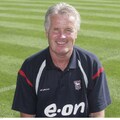Creating space in midfield
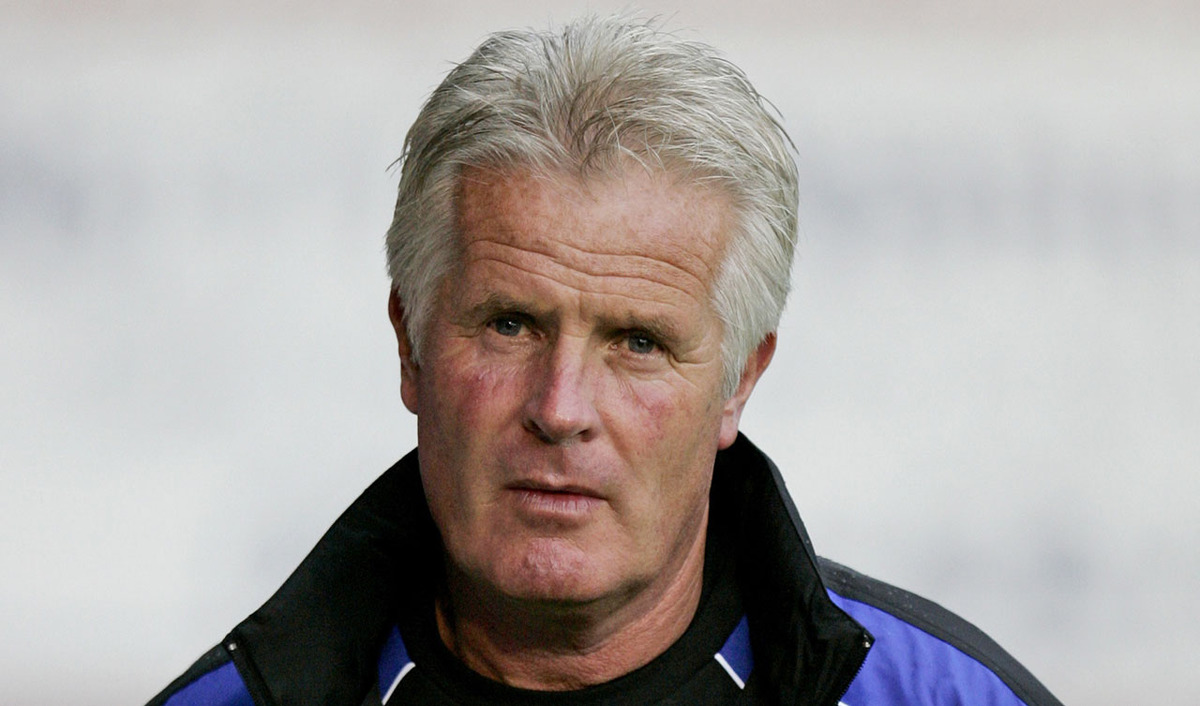
| Area | Up to full pitch |
| Equipment | Balls, bibs, cones, 2 full size goals |
| No. of Players | Up to 20 players + 2 goalkeepers |
| Session Time | Creating space: 15mins Forward runs: 15mins 11v11 game: 10mins |
In the modern game, most teams play with a midfield three and this session is designed to encourage players not to get in each other’s way.
These exercises will help the midfield players to recognise space and encourage them to exploit it when in possession, as well as looking to help them gain an attacking advantage when the session is progressed.
Individual skills are important, so we will encourage players to show they know how to protect the ball when under pressure. More importantly, this session will show players how and when to pass the ball.
This session can last up to 30 minutes with a 10 minute game at the end that will hopefully allow the players an opportunity to demonstrate what they have taken from the session and that they have understood the intended outcomes.
The area sizes can vary depending on the age group and the ability of the players being coached.
“These exercises will help the midfield players to recognise space and encourage them to exploit it when in possession”
CREATING SPACE
We set up a playing area of 30x30 yards divided into four boxes of 15x15 yards, although area sizes can vary depending on the group. We’re using 10 outfield players, split into two teams of three who operate inside the playing area in a 3v3, and a team of four bounce players positioned on the outside of the box to support the team in possession. The outside players are limited to two-touch play and cannot be tackled.
Play starts with one team of three passing to keep possession under pressure from the defending team of three, who must try to win the ball back as quickly as possible, as shown [1a].
[1a]
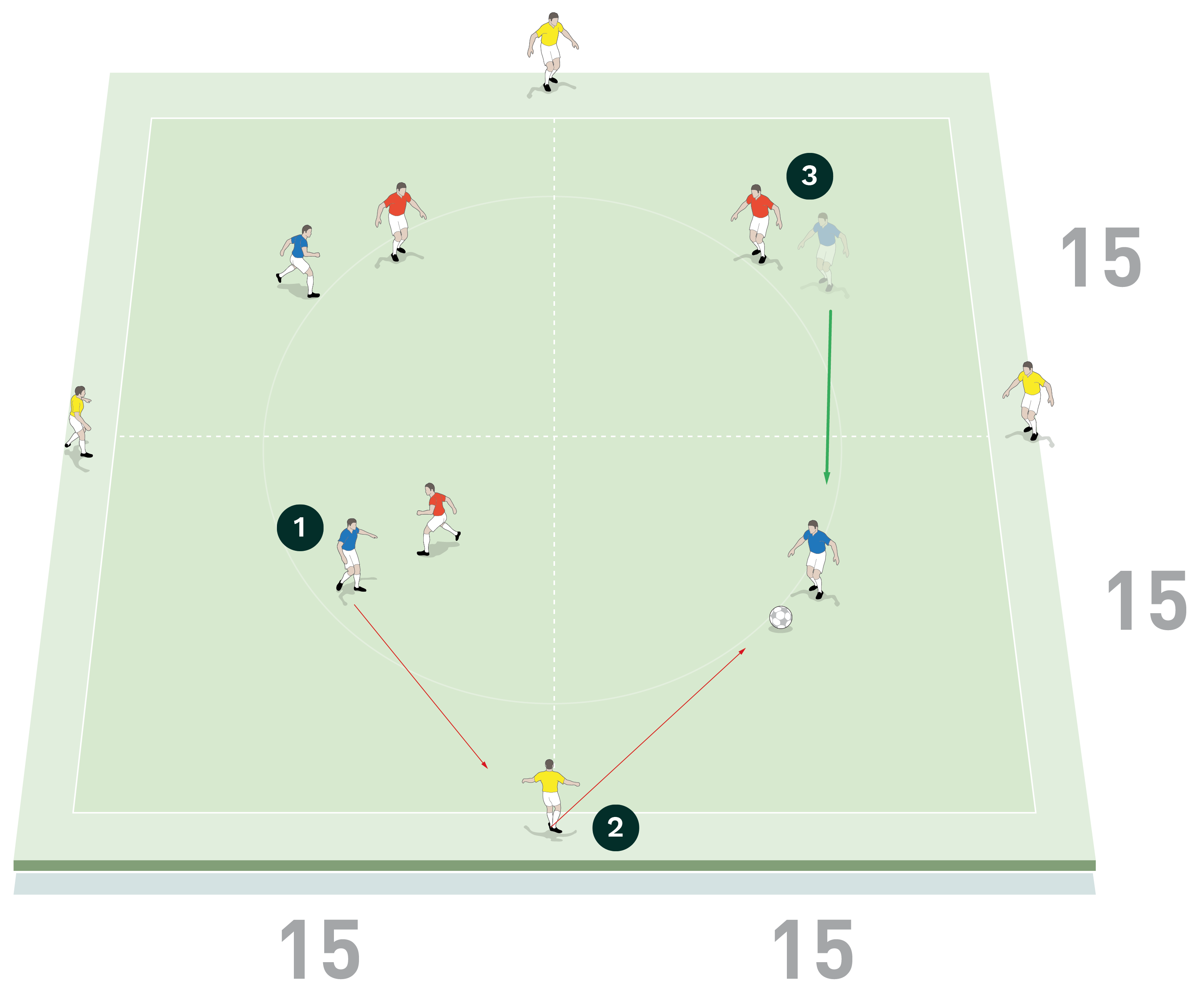
2. Four yellow bounce players are positioned on the outside to support the team in possession. They are limited to two-touch play and cannot be tackled
3. The red defending players press and must try to win the ball back as quickly as possible. If they succeed, they become the new possession team
The team in possession must occupy three out of the four boxes to create the space to receive. When not on the ball, players in the possession team should look for the opportunity to move into the empty box to receive the ball from a team mate or from a yellow bounce player. The three middle players continually rotate and change boxes to create the space to receive.
The team of three players in possession should combine with each other and with the yellow outside bounce players when needed, as shown [1b].
[1b]

2. Possession players should look for the opportunity to move into the empty box to create the space to receive the ball
“ When not on the ball, players in the possession team should look for the opportunity to move into the empty box to receive the ball from a team mate or from an outside bounce player”
CREATE SPACE IN MIDFIELD WITH FORWARD RUNS
To progress the previous activity, two scoring zones of approximately 15 yards in length are added to the existing playing grid, plus a full size goal is positioned at each end. The player set-up remains the same, except two of the outside players are now in the end zone and effectively serve as target players but they still play for the team in possession.
The same principles are followed by the team in possession, who operate in the central box as a midfield three, but the aim now is to pass into a target player at either end. The target player combines with a forward runner from the middle box, who should receive and try to shoot into the unguarded goal, as shown [2a].
[2a]
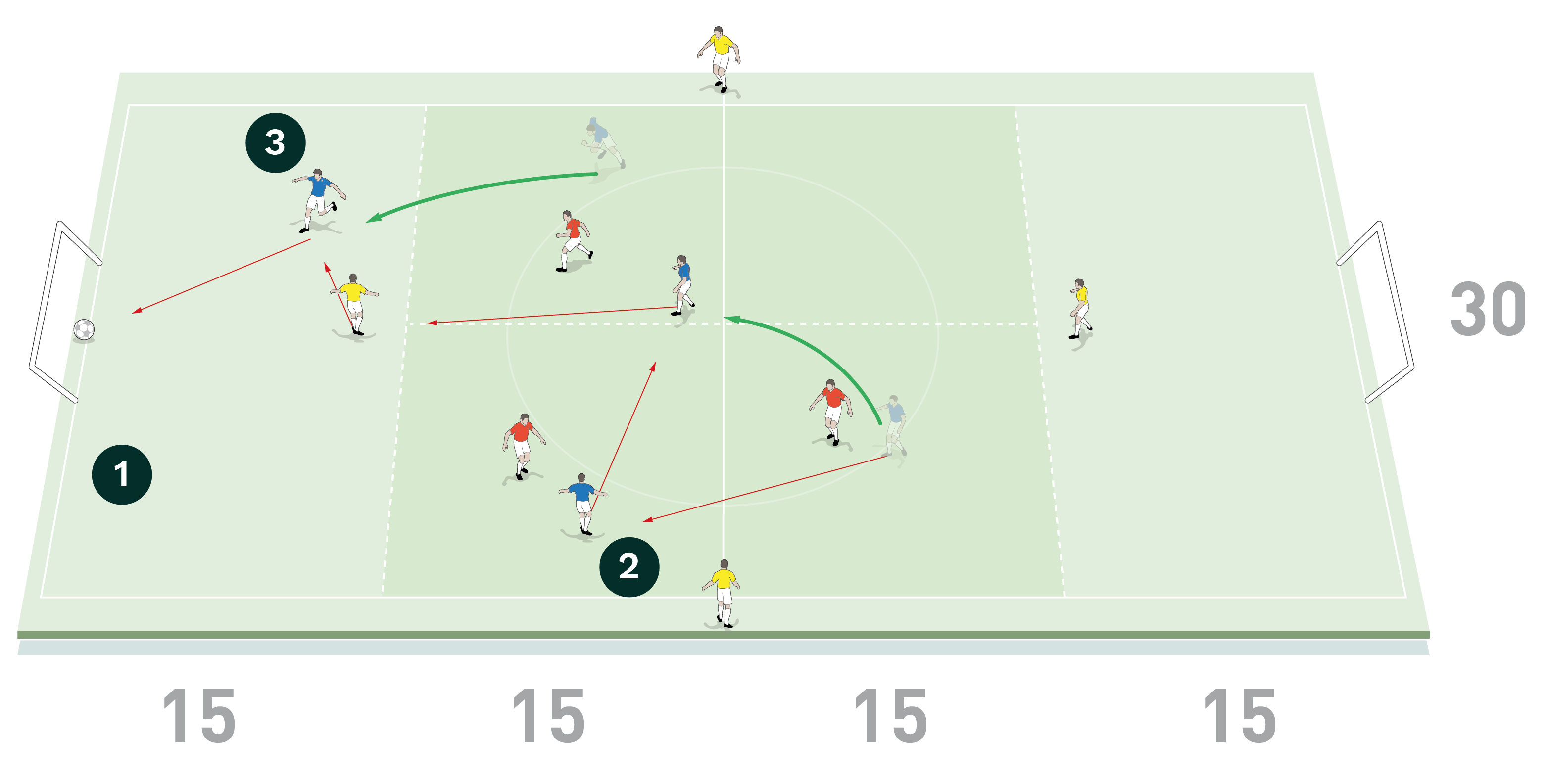
2. The possession team still operate in the central boxes under pressure from the defending team, but the aim now is to create the chance to pass into a yellow target player at either end
3. The yellow target player in the end zone should combine with a possession player making a forward run from the middle box. The runner should receive the pass and shoot into the unguarded goal
The wide outside players are on two-touch and should still be used by the possession team to help them keep hold of the ball, but the outside players cannot play directly to each other unless the coach feels it will benefit the session. The three central possession players are still encouraged to occupy different boxes and should rotate in the boxes to create the space to receive, as shown [2b].
[2b]
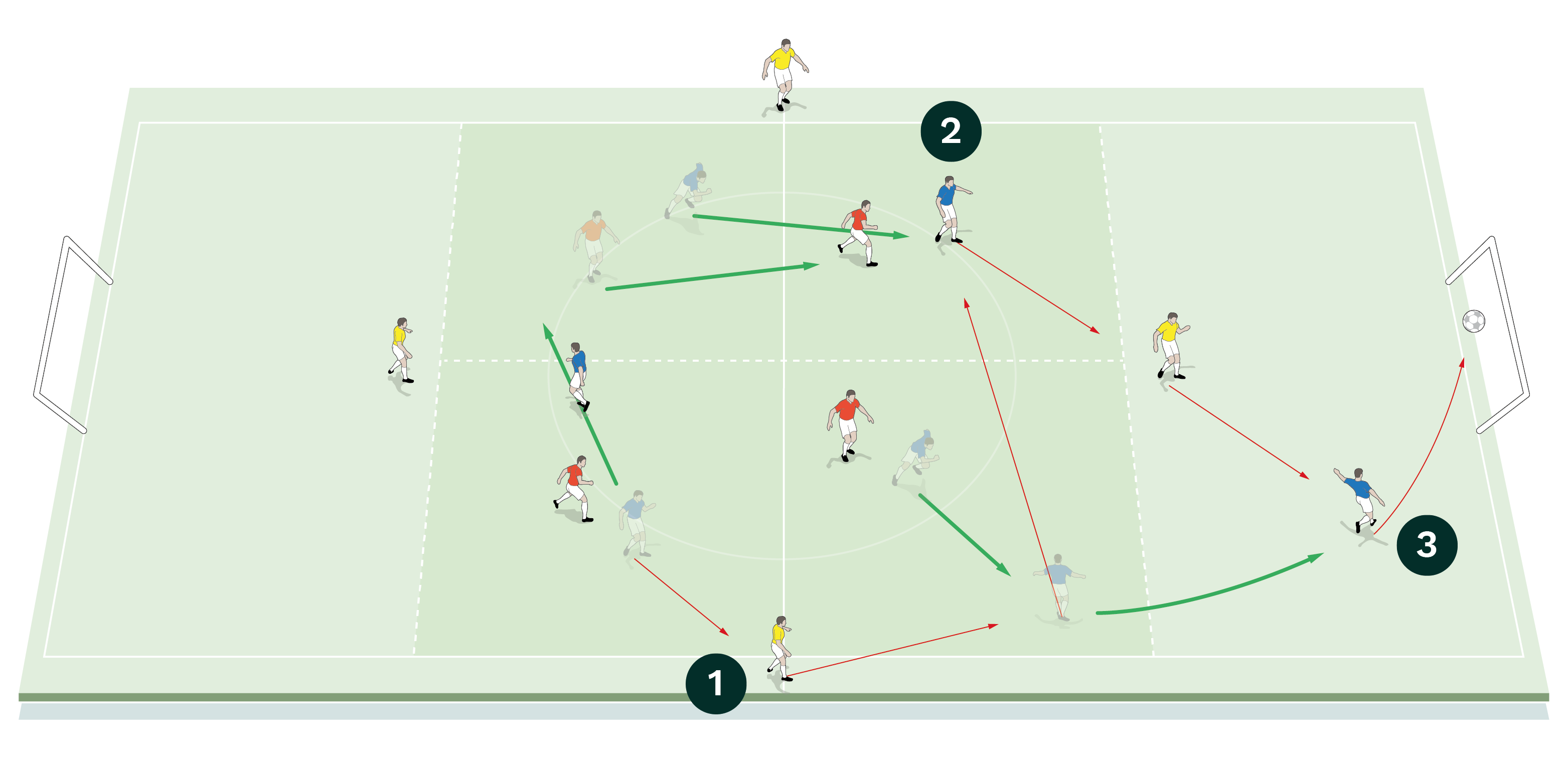
2. The three possession players should rotate in the boxes to create the space to receive and play a through ball to a yellow target player in the scoring zone
3. Here a possession player makes a run into the scoring zones to receive a pass and shoots into the goal
As a progression we can make it directional – if the team in possession want to attack then they have to start by playing into a target player. They can then attack the opposite goal, by building an attack through the opposite target player. The three central players act as three central midfielders and the target players act as either a forward to play off or a centre back to start the attack, depending on which way the play is going, as shown [2c].
By doing this, it will help the defending team to play with a structured shape and stop the ball simply going straight to the nearest target player to launch an attack. We want to see the defending team remaining compact and also offering pressure, cover and balance to stop the ball getting played through.
As a further progression we would allow a defender to make a recovery run to track a runner.
[2c]
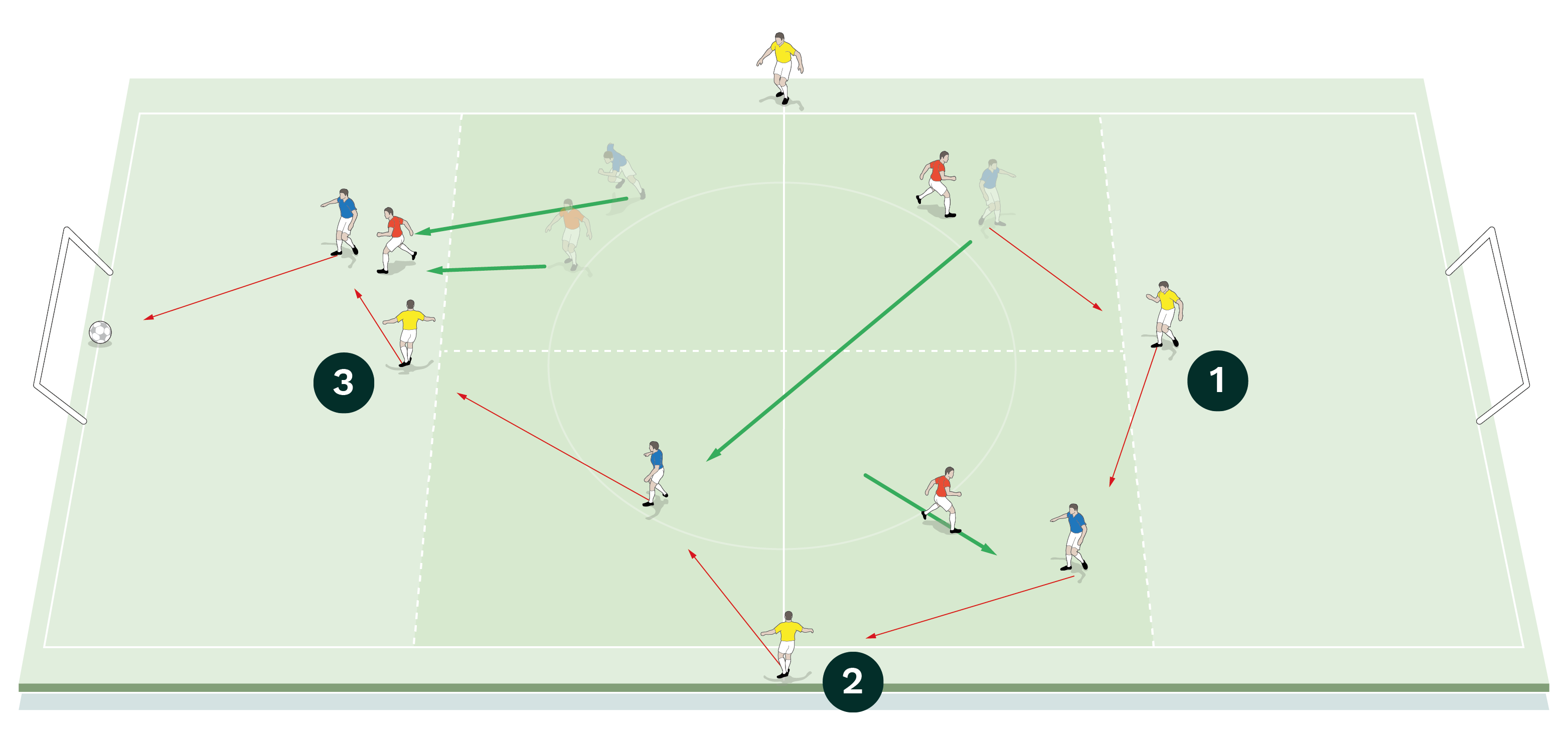
2. The possession team can still use the help of the wide players on the outside
3. After playing into a target player representing a centre back, the possession team can then build an attack on the goal at the opposite end but the attack must play through the other target player, in this case representing a striker
11v11 GAME
The previous activity now progresses into an 11v11 game on the full pitch with a full size goal at each end. The middle grid split into four boxes remains around the centre circle of the pitch for a 3v3 midfield battle. We’re now using 20 outfield players and two goalkeepers split into two teams of 11.
The team in possession must build from the back and play through the midfield box with similar combinations as previously practised. The aim is to release a forward runner from the midfield box and finish with a strike on goal, as shown [3].
The three midfield players should continue to make intelligent movements to open up space for the ball to be received by one of the three players and then produce quick combinations to play through the defending team and into their attacking front three.
[3]
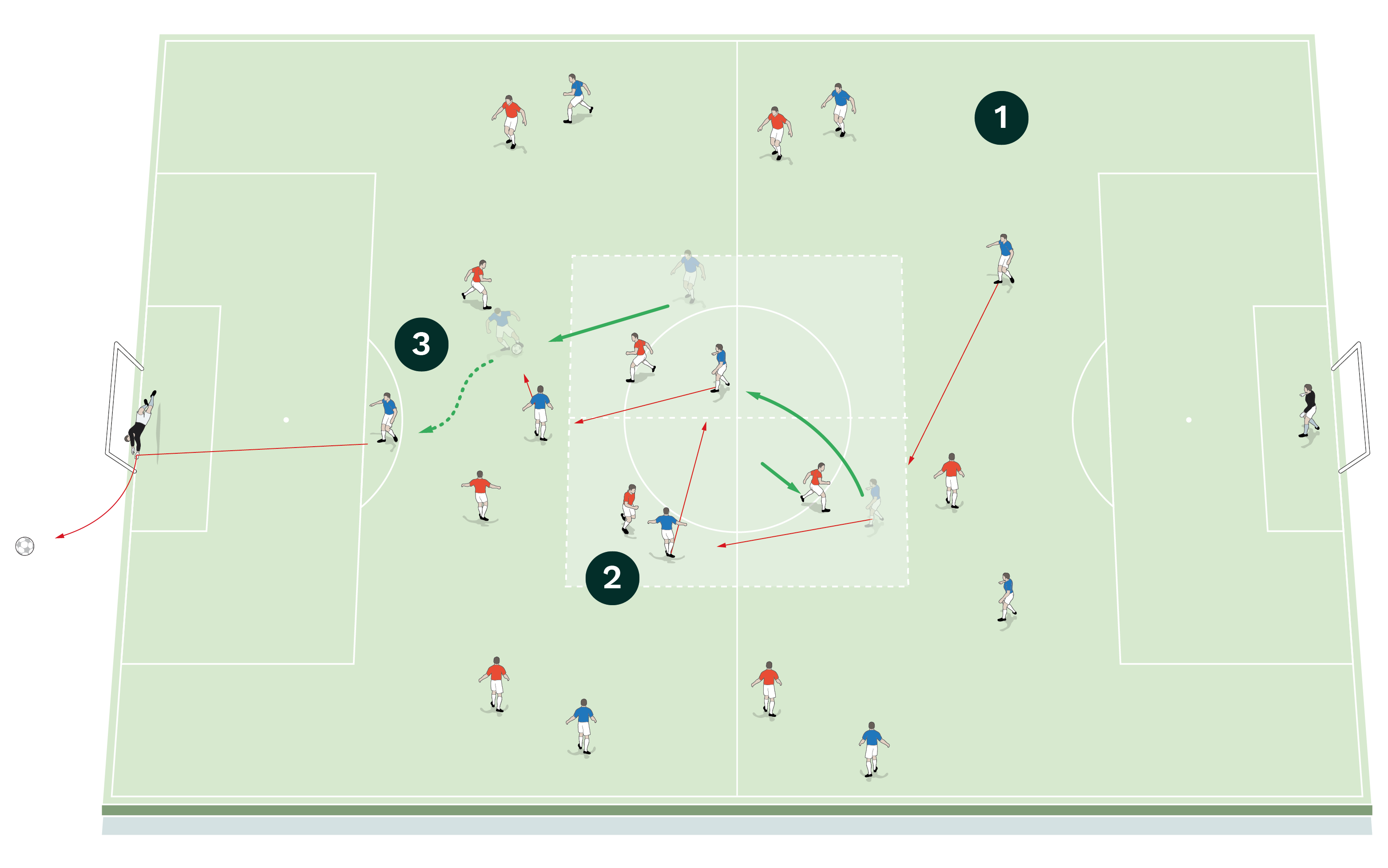
2. The middle grid split into four boxes remains and features a 3v3 midfield battle. The team in possession must build from the back and play through the midfield box using combinations similar to those previously practised
3. The aim is to release a forward runner from the midfield box and finish with a strike on goal
Editor's Picks
Attacking transitions
Deep runs in the final third
Using the goalkeeper in build-up play
Intensive boxes drill with goals
Penetrating the final third
Creating and finishing
My philosophy
Pressing initiation
Compact team movement
Coaches' Testimonials

Alan Pardew

Arsène Wenger

Brendan Rodgers

Carlos Carvalhal

José Mourinho

Jürgen Klopp

Pep Guardiola

Roy Hodgson

Sir Alex Ferguson

Steven Gerrard
Coaches' Testimonials

Gerald Kearney, Downtown Las Vegas Soccer Club

Paul Butler, Florida, USA

Rick Shields, Springboro, USA

Tony Green, Pierrefonds Titans, Quebec, Canada
Join the world's leading coaches and managers and discover for yourself one of the best kept secrets in coaching. No other training tool on the planet is written or read by the calibre of names you’ll find in Elite Soccer.
In a recent survey 92% of subscribers said Elite Soccer makes them more confident, 89% said it makes them a more effective coach and 91% said it makes them more inspired.
Get Monthly Inspiration
All the latest techniques and approaches
Since 2010 Elite Soccer has given subscribers exclusive insight into the training ground practices of the world’s best coaches. Published in partnership with the League Managers Association we have unparalleled access to the leading lights in the English leagues, as well as a host of international managers.
Elite Soccer exclusively features sessions written by the coaches themselves. There are no observed sessions and no sessions “in the style of”, just first-hand advice delivered direct to you from the coach.

